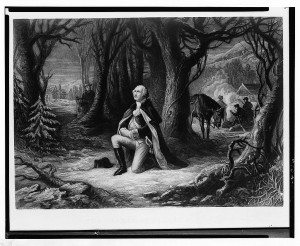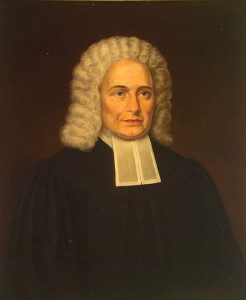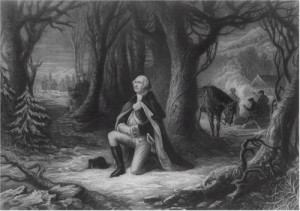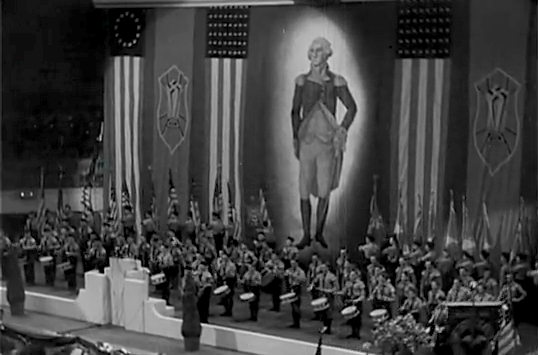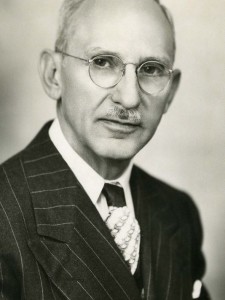Journalists have spilled a great deal of ink trying to suss out which candidate conservative evangelicals would choose in the Republican primary. After all, two thirds of self-described evangelicals identify as Republicans, which makes them roughly half of the party’s base. Since 1976, Republican candidates have actively wooed evangelicals because they are the largest single voting bloc within the party.
Yet the question of which candidate evangelicals prefer is problematic because it assumes a certain homogeneity among evangelicals, as if they have one mind when it comes to politics and faith. That is a false assumption and this primary season has already highlighted major fault lines between Republican evangelicals. Those divisions presage significant changes within American evangelicalism that will affect how evangelicals in the coming generation vote, worship, and think.
Trumpangelicalism
It’s certainly true, as others have noted, that although Trump has won a plurality of evangelical voters in multiple states, a majority have opted for other candidates. And there’s a slight but significant negative correlation between religiosity and support for Trump. In short, Trump wins among evangelicals because he’s winning, period, but he under-performs with evangelicals compared to how well he does with non-evangelical voters. That said, I’m not sure we can just dismiss the fact that a third of evangelicals in, for example, South Carolina have voted for Trump. They certainly aren’t doing so because of their admiration for Trump’s business practices or the depth of his religious commitment.
However, when you dig a little deeper into the data a telling pattern emerges. Trump does well among self-described evangelicals, but not nearly so well with evangelicals who actually attend church. I’m not the first to notice that pattern–J.D. Vance’s article sparked the thought for me–but since no one has yet visually illustrated the point, I thought I’d do so with these side-by-side maps. On the left is a map showing the adherence rate in South Carolina, how many people per 1000 are members of churches. [I used the ARDA website, which should be a go to source for anybody looking for good data on religion in America.] On the right, is a map I made of county-by-county Republican primary results; the darker the color, the higher percentage of the vote Donald Trump received.

The correlation between church membership and a decreased likelihood of voting for Trump is especially apparent in the Upstate, where people are two or three times more likely to go to church regularly…and were half as likely to vote for Trump. There are individual county results that don’t fit the pattern, but there’s a clear line of best fit when you scatter plot the data. Counties with lower church adherence tend to have a higher percentage of Trump supporters.

Evangelicals who support Trump are more likely to be evangelicals in name only. They join evangelical churches at lower rates, attend church less regularly, and, I suspect, are less likely to adhere to key evangelical doctrines. They are cultural evangelicals. Think of them as you would Catholicism in France, where a majority of people profess to be Catholic (75%) but only a handful attend mass weekly (4.5%), give confession, or even ascribe to key church teachings. I grew up in South Carolina and can testify to the simultaneous pervasiveness and thinness of evangelicalism in the South. It’s the universal patois of the Bible Belt–a “Bless his heart” here and a “I’m born again” there–rather than a truly shared faith.
I don’t think we can consider these cultural evangelicals to be either the heart of the tradition or its future. If anything I’d expect that as the “sacred canopy” of Christendom cracks ever wider, these cultural evangelicals will slough off, dropping self-identification and formally (rather than simply practically) joining the ranks of the “nones.” For committed evangelicals, like popular pastor Tim Keller, that prospect isn’t all that alarming, because they see in that trend a healthy winnowing process that sorts true evangelical wheat from cultural evangelical chaff. Viewed in this light, Trump’s support among evangelicals signals the declining hold of evangelical social values on Southern culture and politics, but that might not be a bad thing for evangelicalism as an authentic religious movement.
What Concord Hath Cruz with Rubio?
Even discounting those cultural evangelicals backing Trump, the rump of evangelical voters in the Republican Party have split fairly evenly between Ted Cruz and Marco Rubio. It’s been proposed that the divide is generational, that older voters prefer Cruz while younger ones skew towards Rubio. And there may be something to that idea. For example in Texas, Rubio outperformed among voters 18-29, barely losing that bracket to Cruz, who wiped up among older voters age 30-65. However, if you look at the SC exit polls then you’ll find Cruz outperforming his average with the youngest voters while Rubio has a slight edge among the oldest. (The Carolina polls are particularly useful because the state has a high percentage of evangelical voters at 72% and because Rubio and Cruz ran neck and neck in the final results.)
A much stronger variable that explains the divide is voters’ level of education. In SC Rubio took 32% of voters with postgraduate degrees to Cruz’s 18%. But the script flipped for those with no more than a high school education, giving Cruz 27% to Rubio’s 16%. I suspect that this educational divide explains the income gap as well, with wealthier voters in better-compensated occupations that require college or professional degrees favoring Rubio.
It’s possible that the evangelical divide between Rubio and Cruz is primarily a function of class. Cruz appeals to a similar demographic as Trump, the white working class (albeit those who take their evangelicalism a good bit more seriously). That’s because Cruz has, at least since 2013, adopted the hardest line on immigration among Republican candidates; or he would have were it not for Trump. The difference between the two on the issue is more about rhetorical style than policy substance. Educated professionals feel less threatened by wage competition from illegal immigrants than the working class does. So evangelical workers favor Cruz’s hard line on immigration while evangelical white-collar professionals prefer Rubio’s relatively moderate stance. Class is the primary variable on this issue, not religiosity.
Four Evangelicals (Two Politicians, A Historian, and a Pseudo-Historian) Walk into a Presidential Primary
While class distinctions affect several of the major issues in this election cycle, I do still believe there are substantial theological differences between the evangelicals backing Ted Cruz and those backing Marco Rubio. And the easiest place to examine that divide is also one of the most surprising. Both campaigns have sought endorsements from prominent evangelical historians (although they are prominent in very different ways).
Ted Cruz gained the backing of David Barton, a self-taught historian who now runs one of Ted Cruz’s multi-million dollar Super PACs. Barton’s books and dvds are widely used by evangelical homeschoolers, who are attracted to his message that America was founded as a Christian nation. Barton portrays the bulk of the founding fathers as essentially fellow evangelicals. [Disclosure: As a high schooler, I took a tour of the Capitol in DC led by David Barton himself. No Bible verse etched in marble was left without comment.]
His work, however, has attracted scorn from trained historians, even those who are themselves evangelical. Barton uncritically cites secondhand sources, repeats fake quotations from the founders, and shows little understanding of the broader religious and political context of the late 18th century. Controversy over the scholarly demerits of Barton’s work erupted in 2012, resulting in one of his books being pulled by Christian publishing house Thomas Nelson.
One of the major, critical voices in that controversy was Thomas Kidd, a well-respected professor of history at Baylor University and a conservative Southern Baptist. Kidd’s research focus is 18th century evangelicalism; he’s written books on George Whitefield, Patrick Henry, the First Great Awakening, and the role played by religion in the Revolutionary War. [Disclosure: During my first year in the history PhD program at Penn State, I worked remotely as a research assistant for Kidd.]
A few months after Barton signed on to Cruz’s Super PAC, Kidd joined a pro-Rubio religious liberty advisory board along with megachurch pastor Rick Warren, theologian Wayne Grudem, and a bevy of other evangelical heavyweights. In his explanation for signing on, Kidd referred to Barton’s support for Ted Cruz. Kidd had helped discredit Barton’s historical work and now he sought to minimize his influence with evangelical Republican voters. While the position seems mostly honorary, Kidd has since published several blog posts criticizing the Cruz campaign for its faulty use of history in the service of Christian nationalism.
It’s a remarkable moment. In the past evangelical intellectuals mostly stayed on the sidelines of intramural Republican politics. I can’t imagine Mark Noll, George Marsden, Nathan Hatch, Grant Wacker, or the previous generation of evangelical academics getting involved in partisan politics quite like this. They certainly took a few shots at a prior generation of Christian nationalists, but not in the formal, political arena. And their ideas did not penetrate very deeply into most church pews. Stop by an evangelical church book store today and you’re much more likely to find The Light and the Glory than you are The Search for Christian America. Up until now, the amateur evangelical historians have roundly beaten the professionals at their own game, but Kidd and other evangelical academics have been getting more play among evangelical clergy and laity than has previously been true. While it’s much too early to declare an end to the “scandal of the evangelical mind,” these are positive developments.
Which Great Awakening?
Russell Moore, the head of the Southern Baptist Convention’s Ethics and Religious Liberty Commission, said of the three leading candidates, “I would say that Ted Cruz is leading in the ‘Jerry Falwell’ wing, Marco Rubio is leading the ‘Billy Graham’ wing, and Trump is leading the ‘Jimmy Swaggart’ wing.” I don’t think this is a particularly useful taxonomy because 1) you’d think that Cruz, with his Pentecostal background and the backing of several prominent Pentecostal preachers, would be best qualified for the Swaggart nod and 2) Graham’s legacy is so widely embraced by evangelicals that the comparison with Rubio is mostly meaningless. Moore likes Rubio the best so he compared him to the historical doppelganger he admires the most. That said, I think Moore is right to try and put a finger on some substantive differences between the candidates and their supporters.
There’s a better historical comparison to be made between Cruz/Barton and Rubio/Kidd, but you have to go back several centuries. In short, Thomas Kidd’s view of evangelicalism hearkens back to the First Great Awakening, while David Barton is the heir of the Second Great Awakening. These two historians are promoting authentic but contradictory evangelical visions for engagement in the public square. And the tension between them says something about present day disagreements over the future of American evangelicalism.
Let’s deal first with my comparison of Ted Cruz / David Barton and the Second Great Awakening. There is a direct, lineal connection. Both Barton and Cruz were raised Pentecostals, an early twentieth century offshoot of the Holiness movement, which was itself tied to the rise of Arminian soteriology. 19th century revivalists emphasized humankind’s free will to choose or reject God. This perspective also encouraged social activism as evangelicals felt newly obliged to take an active hand in reshaping America even as they remade themselves. America would be purer, holier, and less given to sinful pursuits like drinking, gambling, and pornography. And by the second half of the 19th century, evangelicals had the cultural and political influence necessary to transform even Constitutional law. At the same time, dispensational theology grew in popularity by promising ordinary evangelicals that they could understand the pattern of world history and current events if they just read the Bible plainly, using their common sense. You didn’t need a fancy seminary degree or knowledge of Hebrew or Greek to understand the Scriptures.
You may already have grasped the similarities between this 19th century evangelical vision and that of Ted Cruz / David Barton. The issues have changed somewhat–Prohibition is no longer the dominant issue that it was in the 19th and early 20th centuries–but the basic logic is the same. They see an active role for evangelicals in making America more pleasing to God. They are culture warriors, children of the New Christian Right who seek to use political power to stem the social changes that they believe threaten an essentially Christian America. Ted Cruz’s father Rafael, who has actively campaigned for his son, is a “Seven Mountains Dominionist,” which combines a heaping of Christian Reconstructionism with a dose of the Prosperity Gospel and a pinch of a messianic complex.
Barton and Cruz, looking back to the 19th century, seek to maintain evangelicalism’s grasp over the American religious and cultural consensus even as that hold slips. As Rafael Cruz put it, “God has raised him [Ted Cruz] up for such a time as this….to beat back secularism and take control of this nation.” To which another pastor added while laying hands on Ted, “There’s a new birth, right now, for America, and it’s taking place right before our eyes….We see this nation being completely restored, completely delivered.” Even so, come, Ted Cruz!
Furthermore, there is a strain of anti-intellectualism in the Cruz / Barton community. Whenever Barton is criticized for his historical inaccuracies, he grumbles about historians belonging to “the most hostile to God…of any profession in the nation.” You don’t need that fancy book learning and formal training to recover America’s Christian past; all it takes is a common sense reading of historical documents. For the sake of time I’ll just briefly note that Barton’s lack of training shows in his credulous reading of secondary sources produced during the Second Great Awakening. He has taken up the two-century-old mantle of “Parson” Mason Weems, who fabricated stories in order to sell books to 19th century evangelicals who wanted to see themselves reflected in the image of the Founding Fathers. And now 21st century evangelicals are looking into the same, distorted mirror and falling in love with themselves all over again, Narcissus reborn.
Cruz and Barton share a majoritarian vision of evangelical public engagement. If most Americans are evangelicals, or so the logic goes, then holding back the tide of depravity simply requires waking Christian people up to the social changes happening before their eyes. Cruz’s presidential campaign is predicated on this very assumption, that winning the White House only requires boosting evangelical turnout on election day. We’ll see, but I want to highlight the way in which this majoritarian vision of evangelicalism clashes with the post-Christian turn in American society.
 Simply put, Americans today may be as spiritual as ever, but their adherence to traditional Christian denominations is in decline. Now, it’s become something of an annual tradition for secularization theorists to predict the utter collapse of religion in the West and then be proved wrong. Still, in the last decade the numbers of religiously non-affiliated have risen sharply, membership in mainline and Catholic churches have dropped significantly, and even evangelical groups have seen a modest fall. If you look at the figure to the left, that’s a decline in the combined Mainline / Evangelical / Catholic adherence rate from 68.3% of Americans in 2007 to 60.9% in 2014. That’s a huge drop in just seven years! For sake of comparison, those groups had a combined share of of 87.7% of American churchgoers in 1850 (see Finke and Stark, The Churching of America, page 56). To find adherence rates as low as today’s, you have to go back to the 18th century. In other words, you have to look at the time of the First Great Awakening.
Simply put, Americans today may be as spiritual as ever, but their adherence to traditional Christian denominations is in decline. Now, it’s become something of an annual tradition for secularization theorists to predict the utter collapse of religion in the West and then be proved wrong. Still, in the last decade the numbers of religiously non-affiliated have risen sharply, membership in mainline and Catholic churches have dropped significantly, and even evangelical groups have seen a modest fall. If you look at the figure to the left, that’s a decline in the combined Mainline / Evangelical / Catholic adherence rate from 68.3% of Americans in 2007 to 60.9% in 2014. That’s a huge drop in just seven years! For sake of comparison, those groups had a combined share of of 87.7% of American churchgoers in 1850 (see Finke and Stark, The Churching of America, page 56). To find adherence rates as low as today’s, you have to go back to the 18th century. In other words, you have to look at the time of the First Great Awakening.
In the 18th century evangelicals were religious upstarts, tiny new denominations dwarfed by the much larger, established Congregationalist and Anglican churches. Evangelical ideas–especially their emphasis on individual soul liberty and congregationalism–challenged the existing social order, including paternal authority, slave-holding, and the entanglement of Church and State. Frequent jailings, beatings, and civil fines profoundly shaped how 18th century evangelicals like John Leland, Isaac Backus, and Samuel Davies thought about the role of their faith in the public square. They were a persecuted religious minority yearning for the liberty to practice their faith free from State interference. To that end, they allied with freethinkers like Thomas Jefferson and successfully fought for religious disestablishment in the brand new United States of America. They had little interest in fomenting sweeping social change, in using State power to make America more pious, holy, or Christian. They asked only for the freedom to be left alone, to “live peaceably with all men,” a Biblical injunction which Leland said “must come with greater force upon the conscience than the mere institutions of human legislators.” Political power could at best enforce the appearance of true religion, but it could not transform hearts. They opposed religious test clauses in the US and state constitutions and argued that true religious toleration required that even “Mahometans” be given the right to freely practice their religion.
I think it no accident that Thomas Kidd shares that more limited view of what evangelicals should seek from politics. At heart, he’s an 18th century evangelical. He’s not searching for “a political messiah,” a chosen one to turn America back to God. And his preferred presidential candidate, Marco Rubio, doesn’t dabble as much in Christian nationalist rhetoric; after all, Rubio is a religious polyglot, currently a member of the Catholic church but previously a Southern Baptist and even, for a brief period as a youngster, a Mormon. All three traditions know something of what it means to be a persecuted religious minority in America.
Kidd joined Rubio’s religious liberty advisory board, not a super PAC with the suspiciously covenantal name “Keep the Promise.” While Cruz and Barton cling to a majoritarian vision of a nation run by and for evangelicals, Rubio and Kidd promote a principled pluralism that ostensibly defends religious liberty for all. (Although it would be nice if in his advisory capacity Kidd would tell Rubio to lay off with the anti-Islamic hyperbole. Kidd did quite literally write the book on Islam and evangelicalism in colonial America.)
American evangelicals are two centuries out of practice when it comes to living as “strangers in a strange land,” but the pluralistic vision of evangelicalism promoted by Thomas Kidd and Marco Rubio is a better fit for our increasingly post-Christian society than the majoritarian fantasies of Ted Cruz and David Barton.







